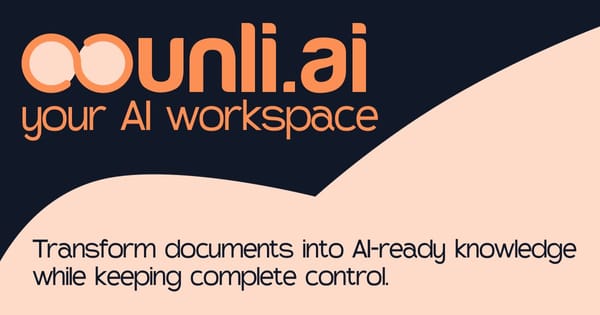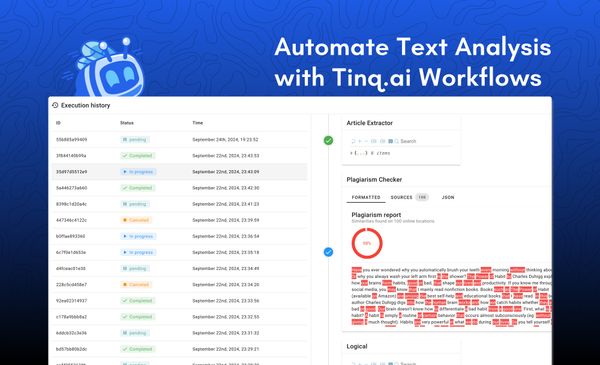How to avoid plagiarism when rewriting with Tinq.ai?
When paraphrasing content, it is important to do what is called "proper paraphrasing" which simply means that it has to be done in a way that includes avoiding plagiarism altogether.

When paraphrasing content, it is important to do what is called "proper paraphrasing" which simply means that it has to be done in a way that includes avoiding plagiarism altogether.
In order to do so, there are steps to follow outlined here by this paper from Chang et al. Without going much into the technical details, the paper says that a proper paraphrase needs to check the following parameters:
- Adequacy – how much of the original context is kept;
- Fluency – how well-written it is;
- Diversity – how original is it.
We've followed these principles while tuning our model to generate the most diverse, unique, and fluent paraphrases for users.
Tinq.ai Pro users and up now have an option to rewrite content with the guarantee that the paraphrase will pass plagiarism checks by platforms like Turnitin.
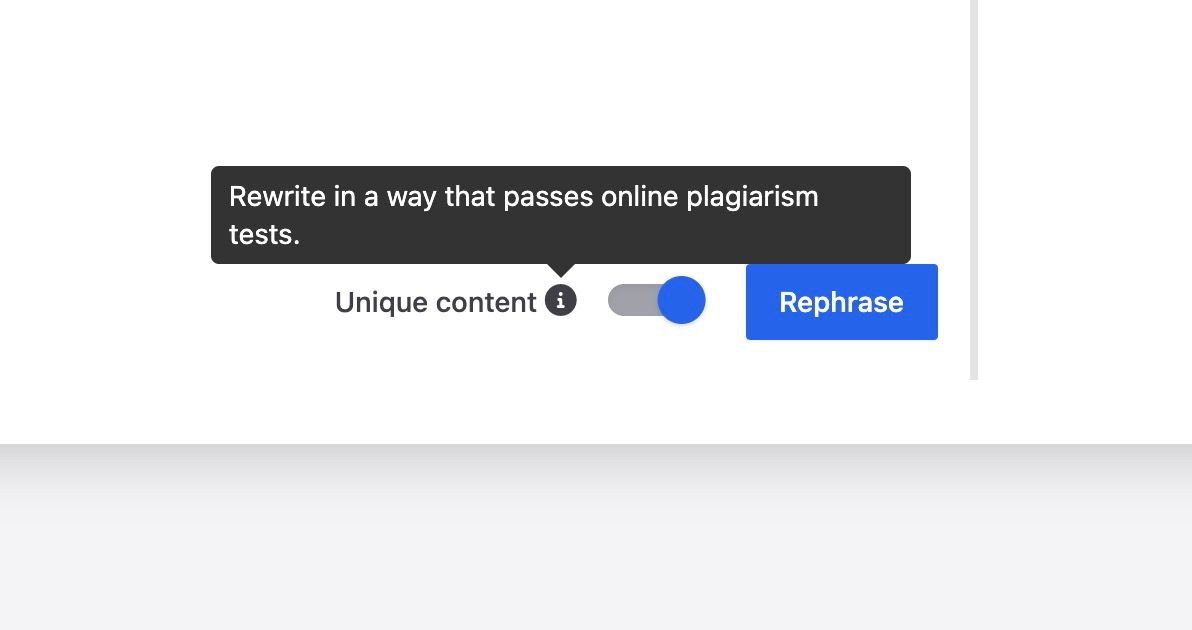
When using this parameter, you can be 97% sure that the output that you will obtain is original enough to not be caught by popular plagiarism and similarity checkers used by most services and institutions.
Here is an example using Tinq.ai's built-in plagiarism checker:
We grabbed a paragraph from this Yahoo! Finances article and made it go through the rewriter. On the left, when the "unique content" parameter is deactivated, the plagiarism checker quickly finds its source online. While it did not when we enabled the unique content toggle.
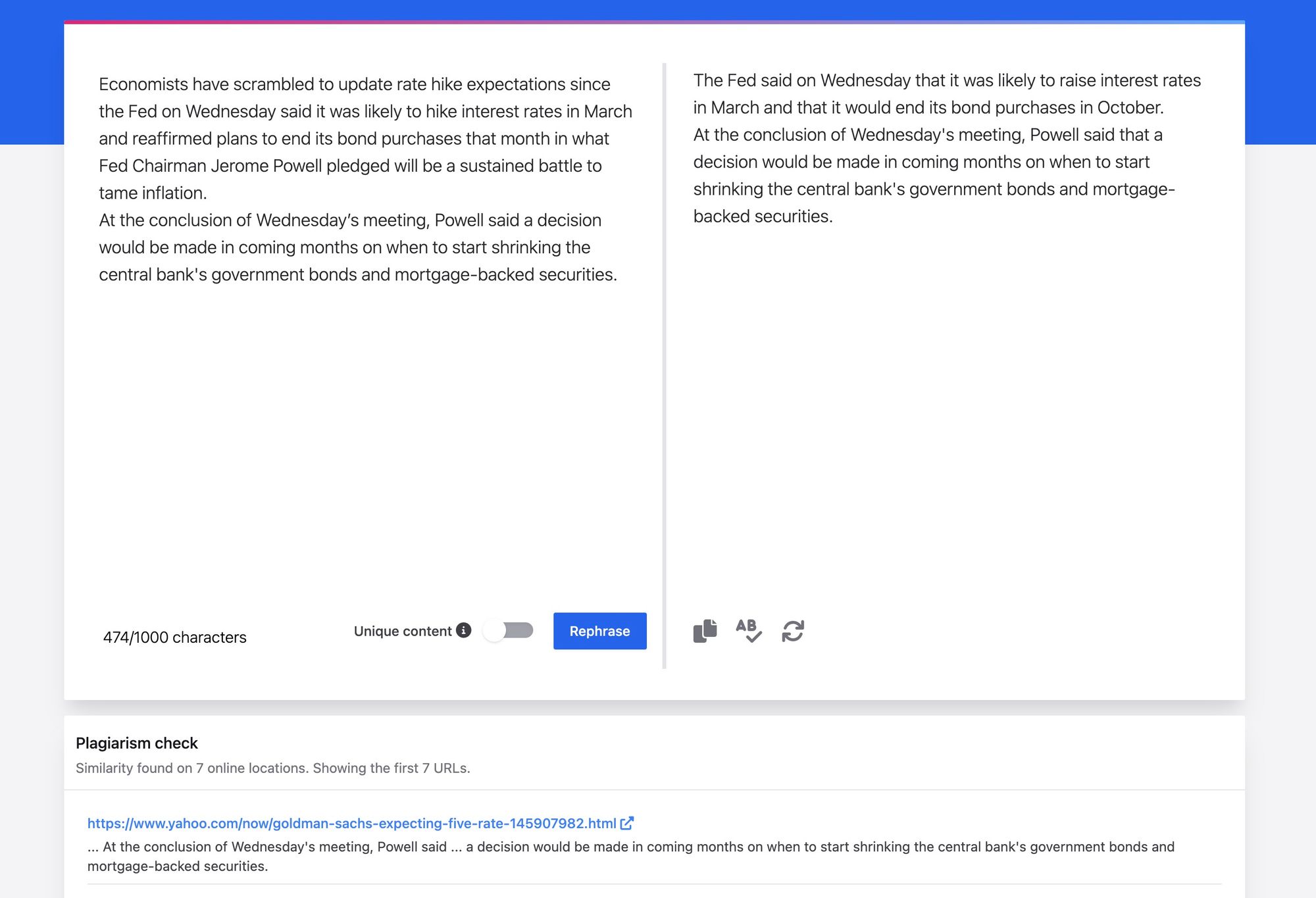
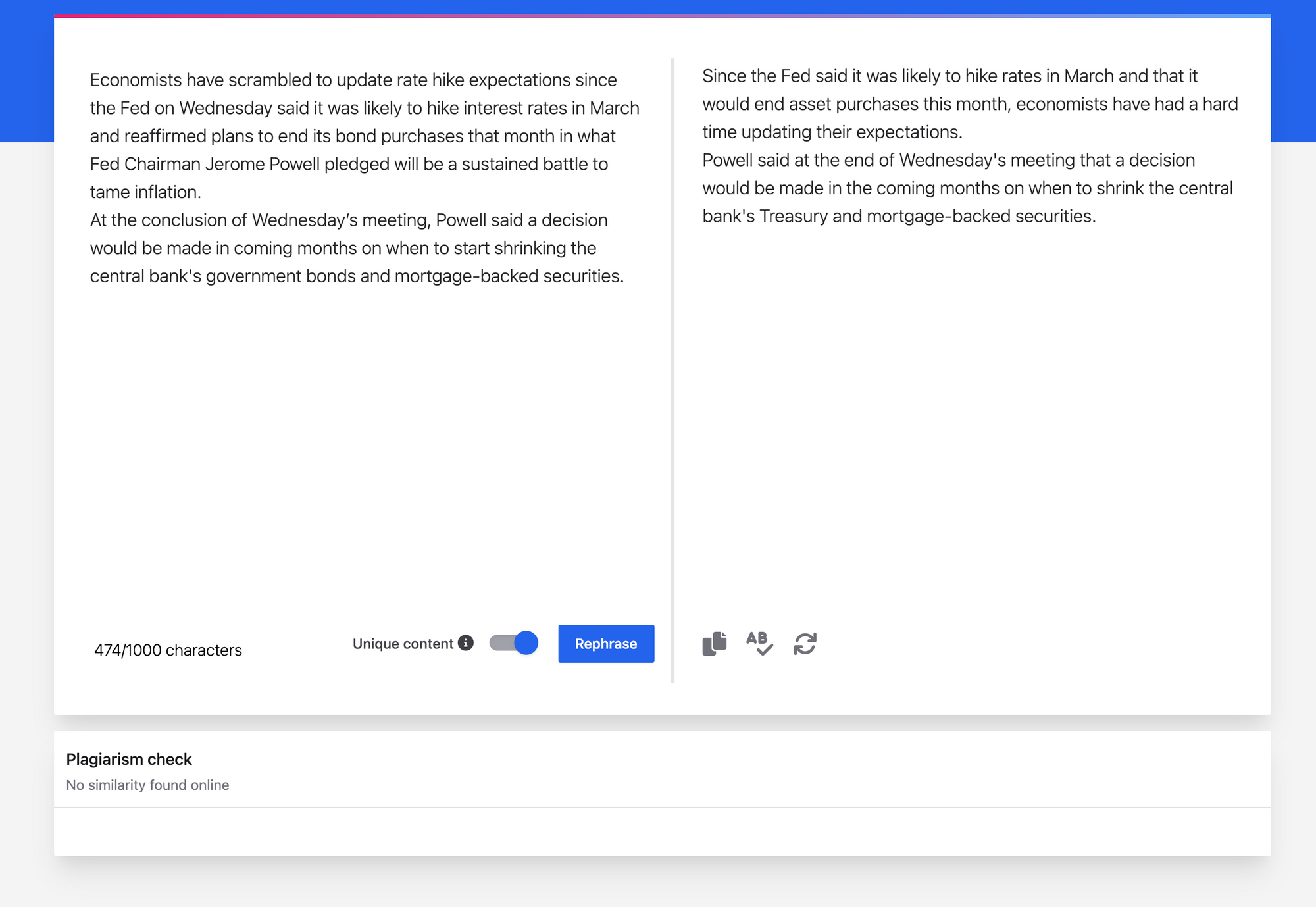
Why is it important?
Being able to restate information in various ways can be beneficial for many users such as content creators and users. At Tinq.ai, we think that rewriting has to be original, therefore each combination given has to be different so that meanings are kept, while word choice, sentence structure is as diverse as possible.
API available!
Yup, all these fabulous features are available through our easy-to-use REST API!
Links:


